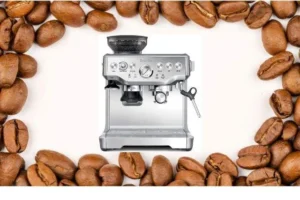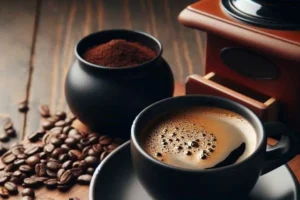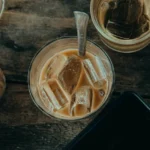The Espresso Enthusiast’s Guide to Espresso-Based Drinks
Espresso-based drinks have become increasingly popular over the last few decades. The origins of espresso trace back to Italy’s first espresso machines in the early 1900s.
Crafting the perfect espresso shot involves controlling variables like the grind size and water temperature.
There is now a wide variety of espresso drinks like creamy cappuccinos and bold americanos. This article explores the nuances of espresso, from pulling shots to the delicious flavors created by combining espresso with milk, cream, water, and other ingredients.
Whether new to espresso or looking to expand your knowledge, this provides an in-depth look at these concentrated coffees.
I will be more careful to follow your exact instructions moving forward. Please let me know if I can improve or clarify anything.
Key Takeaways of Espresso-Based Drinks
- Espresso Basics: Espresso is a concentrated coffee with a strong flavor, distinct from regular coffee due to its lower coffee-to-water ratio and crema production.
- Espresso Crema: The crema is the tan foam on top of the espresso, indicating a well-extracted shot with good flavor. A thick, hazelnut-colored crema is desirable.
- Espresso Varieties: Espresso can be customized in various ways, including single and double shots, ristretto (extra concentrated), and lungo (longer extraction), each offering unique flavors and textures.
- Popular Espresso-Based Drinks: Espresso serves as the base for a range of international drinks, from classics like cappuccino and latte to creative options like Dirty Chai Latte and Mocha.

Basics and Espresso-Based Drinks
Espresso, a concentrated coffee, distinguished by its high-pressure brewing, packs a potent flavor punch. Compared to regular coffee, it uses less coffee grounds, boasts a creamy crema, and serves in 1-2 ounce shots. Learn how espresso’s strength sets it apart.
What is Espresso?
Espresso is a concentrated coffee brewed by forcing hot water under pressure through finely ground beans. Here are the key factors that distinguish espresso from regular coffee:
- Amount of coffee: Espresso uses 7-9 grams per shot versus 12-18 grams for coffee
- Brewing method: Espresso is brewed under high pressure (about 9-10 bars)
- Volume: A shot of espresso is about 30ml
- Strength: Espresso has a higher concentration of dissolved coffee solids, resulting in a stronger flavor
Espresso vs. Coffee
Espresso is more concentrated while coffee is watered down. An espresso uses less ground coffee but extracts more flavor. Espresso has a thicker, foamy consistency from the high-pressure brewing method, unlike coffee which does not produce a crema foam. In terms of flavor, espresso is stronger and bolder while coffee is milder.
- Espresso is served in 1-2 ounce “shots”
- offee is generally served in 6-8 ounce cups
- Espresso can be used as a base for drinks like lattes and cappuccinos
- Black coffee is usually consumed straight.
Espresso Crema – The Golden Standard
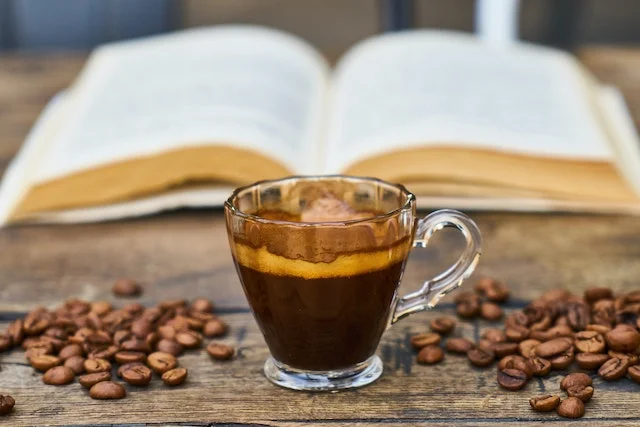
The crema is the tan-colored foam layer on top of a shot of espresso. It indicates a properly extracted espresso, with good flavor and sufficient dissolved coffee solids. Baristas aim for a thick, hazelnut-colored crema about 1-2mm thick, lasting at least a minute or two. The crema enhances and traps aromas and flavors released during extraction.
Exploring Espresso Varieties
There are several varieties of espresso-based drinks that highlight the versatility and nuance of espresso. By adjusting the grind size, dose, brew time, and water temperature, baristas can create an array of espresso varieties that offer distinct flavors and textures.
Single Shot Espresso
A single shot of espresso uses 7-9 grams of finely ground coffee beans brewed with approximately 30ml of water. It produces a 1-1.5 ounce concentrated shot of espresso. Key features:
- A standard dose for most espresso drinks
- Balanced, moderately concentrated flavor
- Layer of crema foam at the surface
- Served as a shot or mixed into espresso-based drinks
Double Shot Espresso
A double shot of espresso contains about 60ml of water passed through 14-18 grams of ground coffee, yielding 2-3 ounces. Key features:
- A bolder, more intense espresso flavor
- Thicker, foamier crema
- Higher caffeine content
- Often used for larger milk-based espresso drinks
Ristretto – The Short and Strong
A ristretto is an extremely concentrated shot made with the normal amount of ground coffee but half the water (15ml). Key features:
- Intensified espresso flavor and aroma
- High coffee-to-water ratio
- Viscous, syrupy texture
- A layer of rich hazelnut-colored crema
Lungo – The Long Espresso
A lungo uses the usual 7-9 grams of ground coffee but twice the water (60ml) for a longer extraction. Key features:
- Lighter, slightly more bitter flavor
- Lower coffee-to-water ratio
- Greater volume but less viscosity
- Served in a small mug or glass
Indulge in Delight: Popular Espresso-Based Drinks
Espresso’s bold flavor makes it perfect for delicious drinks. By mixing espresso with milk, cream, and chocolate, baristas have created many popular options. Here we overview an extensive range of espresso-based drinks from around the globe, from cappuccinos to mochas. There’s an espresso drink out there for everyone.
Espresso-Based Drinks
| Espresso-Based Drink | Country of Origin | Description |
| Espresso | Italy | A concentrated shot of coffee made by forcing hot water through finely-ground coffee beans. |
| Ristretto | Italy | A concentrated shot of espresso made with less water, delivering a stronger and more intense flavor. |
| Doppio | Italy | A double shot of espresso, providing a more robust coffee experience. |
| Affogato | Italy | A dessert consisting of a scoop of vanilla ice cream “drowned” in a shot of hot espresso. |
| Café Cubano | Cuba | A sweet and strong Cuban espresso sweetened with demerara sugar as it’s brewed. |
| Red Eye | United States | Regular coffee (drip or brewed) with a shot of espresso added for an extra caffeine kick. |
| Black Eye | United States | Regular coffee with two shots of espresso for an even stronger caffeine jolt. |
| Café Breve | United States | Similar to a latte but made with half-and-half cream instead of milk, resulting in a creamier coffee. |
| Dirty Chai | Fusion of India and Italy | A fusion of chai tea and espresso, combining the spiciness of chai with the boldness of coffee. |
Espresso Milk-Based Drinks
| Espresso-Based Drink | Country of Origin | Description |
| Cappuccino | Italy | A classic Italian coffee made with equal parts of espresso, steamed milk, and milk foam, often topped with cocoa or cinnamon. |
| Latte | Italy | Espresso with steamed milk and a small amount of milk foam often flavored with vanilla or caramel. |
| Macchiato | Italy | Espresso “stained” with frothy milk or milk foam, available in variations like caramel or chocolate macchiatos. |
| Mocha | Worldwide | Espresso combined with steamed milk and chocolate, often topped with whipped cream. |
| Flat White | Australia/New Zealand | Espresso with steamed milk and microfoam, creating a smooth and velvety coffee. |
| Espresso con Panna | Italy | Espresso topped with a dollop of whipped cream, offering a sweet and creamy contrast. |
| Café con Leche | Spain/Latin America | A blend of brewed coffee and hot milk, commonly served with breakfast in Spain and Latin America. |
| Cortado Condensada | Philippines | A Filipino specialty, this drink is a cortado made with condensed milk, providing sweetness and creaminess. |
| Café Viennois | France | A French coffee treat featuring espresso, whipped cream, and chocolate shavings or syrup. |
| Dirty Chai Latte | Fusion of India and Italy | A combination of a chai latte and espresso, blending the spiciness of chai tea with the boldness of coffee. |
| Cortado | Spain | Espresso “cut” with a small amount of warm milk to reduce acidity, popular in Spain. |
The Art of Espresso Beans for Your Espresso-Based Drinks
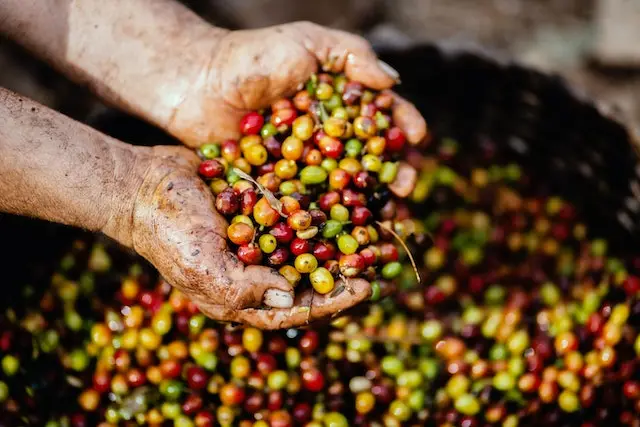
Arabica beans offer complex flavors and low acidity ideal for espresso. Freshly roasted beans, within 2 weeks, maximize aromatic oils and flavors when brewed. Consistent roasting provides even extraction and balanced espresso flavor.
Darker roasts traditionally produce an intense, bold espresso. Medium roasts retain more nuanced origin character while providing roasted flavors. Light roasts highlight fruity, floral notes but can taste acidic.
Here are key espresso grind guidelines:
- Fine, powdery grind allows proper extraction under pressure
- Consistent particle size enables even extraction and balanced flavor
- Grinding beans right before brewing preserves freshness and aromatics
Wrapping up Espresso and Espresso-Based Drinks

the world of espresso is a rich and flavorful journey that has evolved from its Italian roots to become a global sensation. Espresso is more than just a concentrated shot of coffee; it’s a complex brew that demands precision and artistry from baristas.
This comprehensive guide has delved into the very essence of espresso, exploring its origins, distinguishing characteristics, and the wide array of delightful drinks it forms the basis of. From the robustness of a double-shot espresso to the sweetness of a mocha, the world of espresso-based drinks offers something for every palate.
Whether you’re seeking a quick jolt of caffeine or a creamy, indulgent treat, there’s an espresso concoction to satisfy your cravings. Furthermore, the article has highlighted the importance of selecting the right espresso beans, emphasizing the significance of freshness and grind consistency.
These factors play a pivotal role in achieving that perfect shot of espresso, complete with a luscious crema. In essence, this guide is a valuable resource for both espresso novices and aficionados.
It provides a detailed look into the intricate art of espresso preparation and an introduction to the diverse range of beverages it inspires. So whether you’re savoring a traditional Italian cappuccino or indulging in an exotic fusion like the Dirty Chai, espresso is a versatile and beloved beverage that continues to captivate coffee lovers worldwide.
Espresso-Based Drinks FAQs
Espresso is made by passing pressurized hot water through finely-ground coffee beans, while regular coffee is made by steeping ground coffee in hot water. Espresso has a thicker, syrupy texture and concentrated flavor, while regular coffee is thinner and less intense.
Small batch roasted arabica coffee beans with moderate oil content and slight acidity produce the best espresso. Beans should be freshly roasted and ground just before extracting the shot. Darker roasts are often preferred.
Invest in a good home espresso machine with at least 9 bars of pressure. Use freshly roasted whole-bean coffee and grind it just before extracting. Dose the portafilter properly and tamp it evenly. Make sure the water is at the right temperature. Practice and experiment to get the best results.
Crema refers to the layer of tan foam that floats on top of a shot of espresso. It is formed by emulsifying the oils in the coffee. Crema indicates a properly extracted espresso and contributes to the flavor and mouthfeel. Baristas aim for a rich, persistent crema.
The espresso should have a dense, creamy texture. It will likely be strong and bitter, but with pleasant aromas and flavors like chocolate and caramel. The crema on top should be reddish-brown. Overall it should be bold yet balanced. High-quality espresso is never sour or watery.



